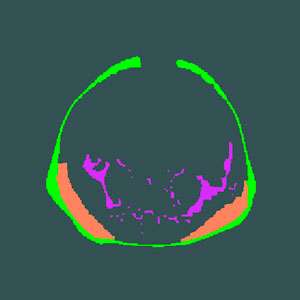Understanding ethnic differences in abdominal fat distribution at birth

Abdominal fat in adults has long been associated with increased risk of metabolic and cardiovascular disease. Now, a Singaporean team has studied more than 300 infants and found the amount of abdominal fat they carry varies depending on ethnic background. This may be the first step in establishing a link between abdominal fat in newborns and disease later in life.
Investigators from A*STAR, the KK Women's and Children's Hospital and the National University Health System conducted magnetic resonance imaging abdominal scans on 333 Singaporean newborns of Chinese, Malay and Indian ethnicities who were part of the Growing Up in Singapore Towards Healthy Outcomes (GUSTO) birth cohort. They found significant differences in the amounts of abdominal fat between ethnicities. The findings support the notion that maternal lifestyle during prenatal development may alter glucose metabolism and body composition, contributing to the higher risks for cardiac and metabolic diseases (like diabetes) seen in Indian and Malay adults in Singapore.
"Our findings of ethnic differences in abdominal adiposity at birth are important as they not only reflect the influence of genetic factors unique to ethnic groups, but also the importance of ethnic-specific maternal lifestyle and nutrition during pregnancy," says Yung Seng Lee from the A*STAR Singapore Institute for Clinical Sciences.
The study investigated differences in three different fat compartments in the abdomen: abdominal superficial subcutaneous tissue, which is located just under the skin and surrounds the abdominal cavity; abdominal deep subcutaneous tissue, which is clearly separated from the superficial fat by a sheath of fibrous tissue and is located on either side of the posterior abdominal wall; and internal adipose tissue—the minute amount of fat that surrounds the abdominal organs.
The researchers compared the volumes of each fat compartment and found that Indian and Malay newborns had greater volumes of deep subcutaneous fatty tissue than the Chinese babies.
"Several reports have found that deep subcutaneous adipose tissue is strongly associated with insulin resistance and cardiovascular outcomes in type II diabetic adults. The possible relevance of this in the babies is intriguing, but we need to continue to track the fat depot distribution over time to substantiate its significance," says Mya Thway Tint of Yong Loo Lin School of Medicine.
If further research supports these findings, it highlights the importance of maternal health and wellbeing both before conception and during pregnancy, explains Tint. Further studies are needed to investigate correlations between maternal lifestyle and abdominal fat distribution in newborns. "This may help to strategize ethnic-specific early interventions such as lifestyle modifications and nutritional guidelines for women [who are planning to become pregnant]," she says.
The team will track changes in abdominal fat volume in the newborns when they reach four and six years of age to help further understand the impact of ethnic variation in adiposity, as well as other maternal and developmental factors, on subsequent risks of cardio-metabolic diseases.
More information: Tint, M. T., et al. Abdominal adipose tissue compartments vary with ethnicity in Asian neonates: Group Up in Singapore Toward Healthy Outcomes birth cohort study. American Journal of Clinical Nutrition. DOI: 10.3945/ajcn.115.108738



















